Buyers Switch to Supply Chain Software for Greater Efficiency and Functionality
Finding the right supply chain software can be difficult, especially if you don’t know where your business priorities lie. That’s why it’s crucial to understand which features to look out for during your software search.
Each year, Software Advice’s advisors speak with thousands of software purchase decision-makers evaluating new supply chain management software for their businesses. We've mined those conversations for insights on other small businesses' budgets, feature needs, and pain points to aid your software search.
Key insights
Software buyers prioritize warehouse management functionality during purchase, while actual users consider the order fulfillment feature the top priority in supply chain software.
Most businesses rely on spreadsheets, manual methods, or third-party software for their day-to-day supply chain operations, such as inventory tracking and goods distribution.
Switching to supply chain software is driven by inefficiency and limited functionality in current methods and software, alongside emerging business opportunities.
The top five industries investing in supply chain software allocate $127-$187 per user per month, with an overall buyer average of $163 per user per month.
Buyers seek warehouse management, while users rate order fulfillment as a critical feature
To gain insights into user preferences, we analyzed thousands of supply chain software reviews available on Software Advice to identify the features that supply chain software users consider the most critical for their daily work. Interestingly, our findings revealed a discrepancy between the priorities of supply chain software buyers and users.
Forty-seven percent of actual SCM software users rate order fulfillment as a critical feature. Compared to that, 46% of supply chain software buyers prioritize seeking the warehouse management feature during software purchase.
These findings indicate that businesses already using supply chain software find immense value in order fulfillment as it helps simplify processing orders from receipt to delivery. Order fulfillment verifies incoming orders by validating them against predefined criteria, such as credit checks and order minimums. The feature provides real-time visibility of incoming and outgoing orders and inventory levels and helps businesses optimize and save on inventory holding costs.
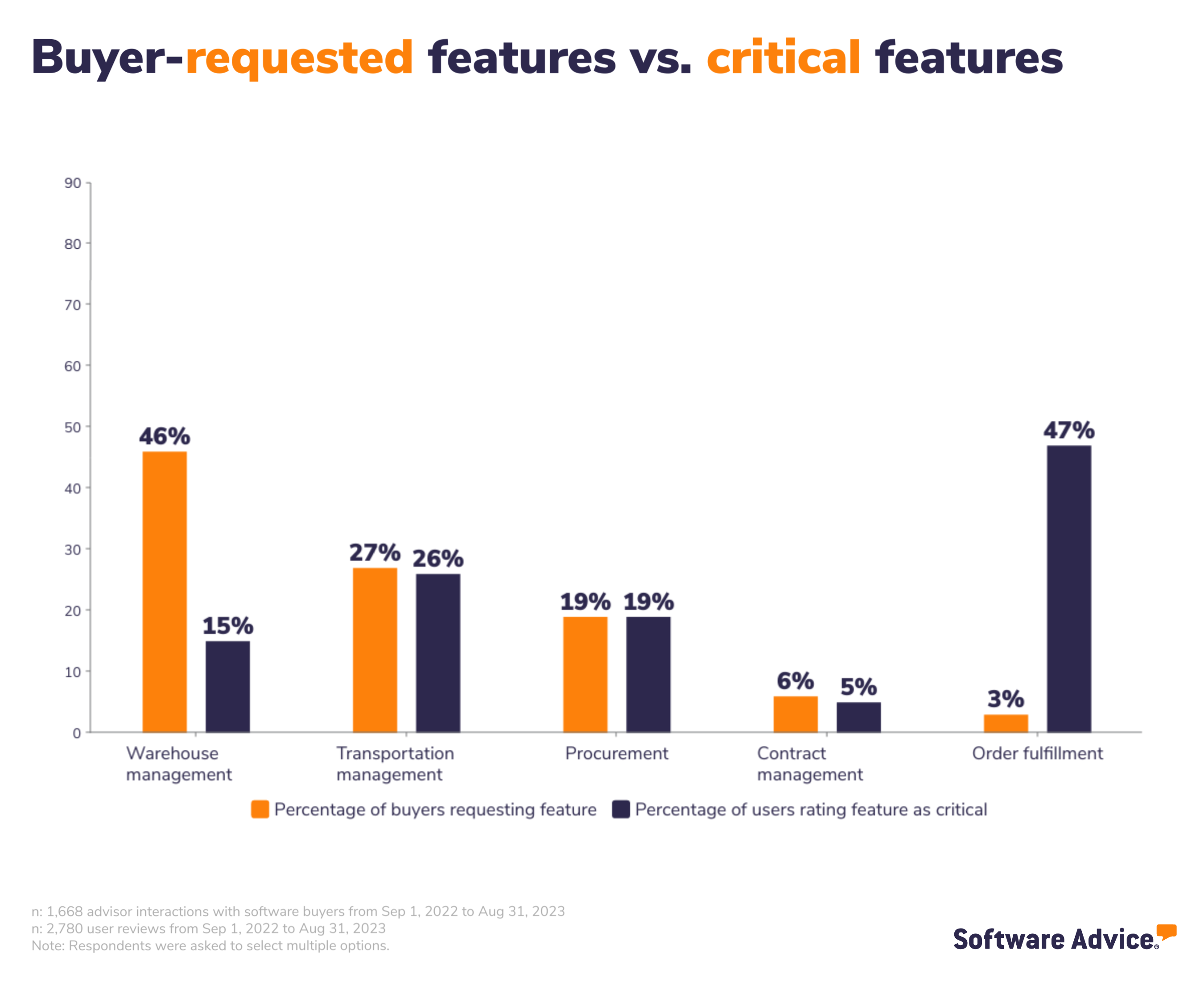
Pro tip
Ensure that the software complies with relevant industry regulations, certifications, and safety standards specific to your industry, such as Food and Drug Administration (FDA) compliance for food and beverage, to avoid potential legal or operational risk.
Most businesses rely on spreadsheets, manual methods, or third-party software for their day-to-day supply chain operations
When our advisors asked buyers what methods they were currently using to handle their day-to-day supply chain operations, here's what they found:
Forty-three percent of buyers use other software, such as accounting tools, to handle inventory tracking and control and goods distribution.
Twenty-seven percent of buyers use manual methods, such as spreadsheets, to keep tabs on their inventory, manage vendor contracts, and maintain data sets to manage large purchases.
While such methods can help manage day-to-day operations, having a dedicated supply chain management platform is crucial to centralize processes such as order tracking, monitoring inventory levels, and keeping track of production status. Supply chain software also provides a dashboard to store, view, and manage supplier contracts and performance evaluations, and track current market trends.
Consolidating functions within a single supply chain platform eliminates the need to invest in multiple third-party software and manage their licenses, subscriptions, and integrations.
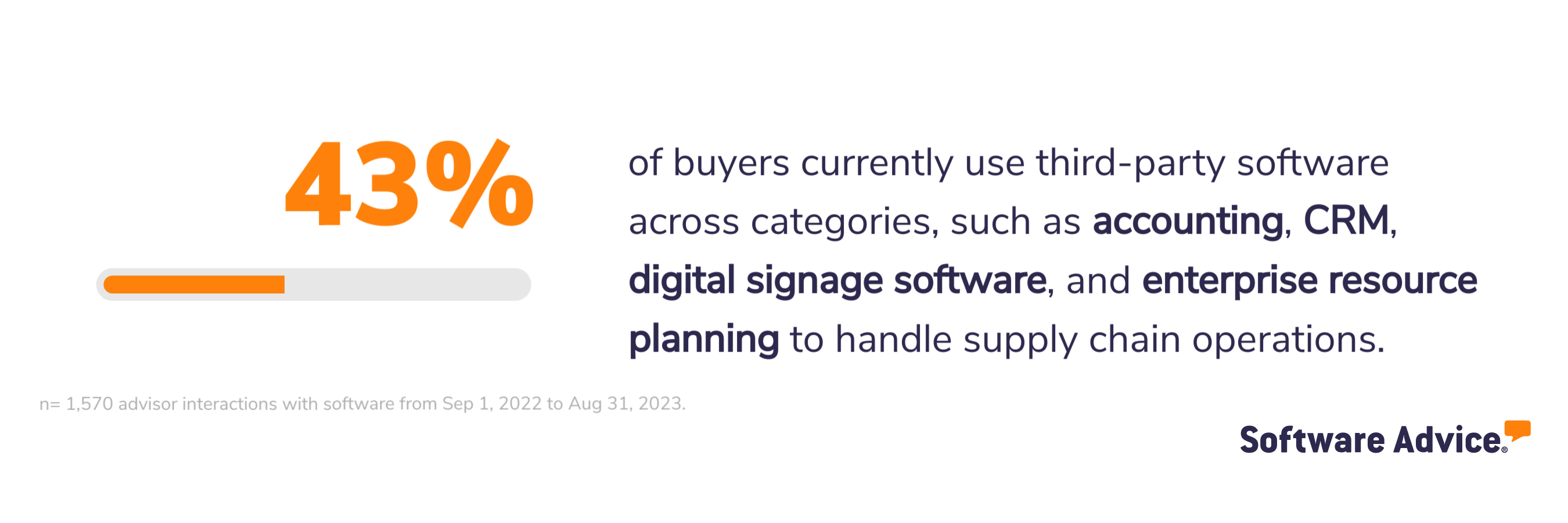
Pro tip
Tailor required software functionality to meet your supply chain team's specific needs, as data shows varying opinions on critical features for different businesses. Identify your unique requirements rather than simply listing general features. For example, FMCG businesses will prioritize efficient demand forecasting, route optimization, and inventory control, while a clothing business will look for cost estimation tools to win competitive bids and maximize profits.
Inefficiency, limited functionality, and new business opportunities are key drivers of supply chain software switch
Our advisors conversed with buyers currently using either manual methods or third-party software and seeking a switch to supply chain software. These discussions shed light on businesses' real-life challenges with their existing tools. These included inefficiency (48%), limited functionality (26%), and new business opportunities (13%).
Inefficiency: Third-party tools often fail to centralize core supply chain operations, such as demand forecasting, sourcing and procurement of raw materials, and order management and fulfillment. Buyers find it increasingly complicated and time-consuming to manage multiple software to handle these independent tasks, further adding to the inefficiency in the overall supply chain management process.
Limited functionality: Third-party tools often don't have demand forecasting, multi-channel management, or real-time inventory tracking functionality. Such limitations can be disruptive as your supply chain business scales and your needs evolve. Most supply chain software buyers look for functions beyond basic inventory tracking, such as procurement, packing, shipping, and transportation.
New business opportunities: As supply chain businesses scale, their warehouse capacity and logistical requirements also increase. Such transitions demand dedicated tools to manage and process goods that move in and out of warehouses. Additionally, buyers indicate that inventory holding and tracking costs increase when new warehouses open in multiple locations. Such expansions necessitate a centralized inventory tracking solution that creates detailed inventory-level reports to optimize distribution and save money.
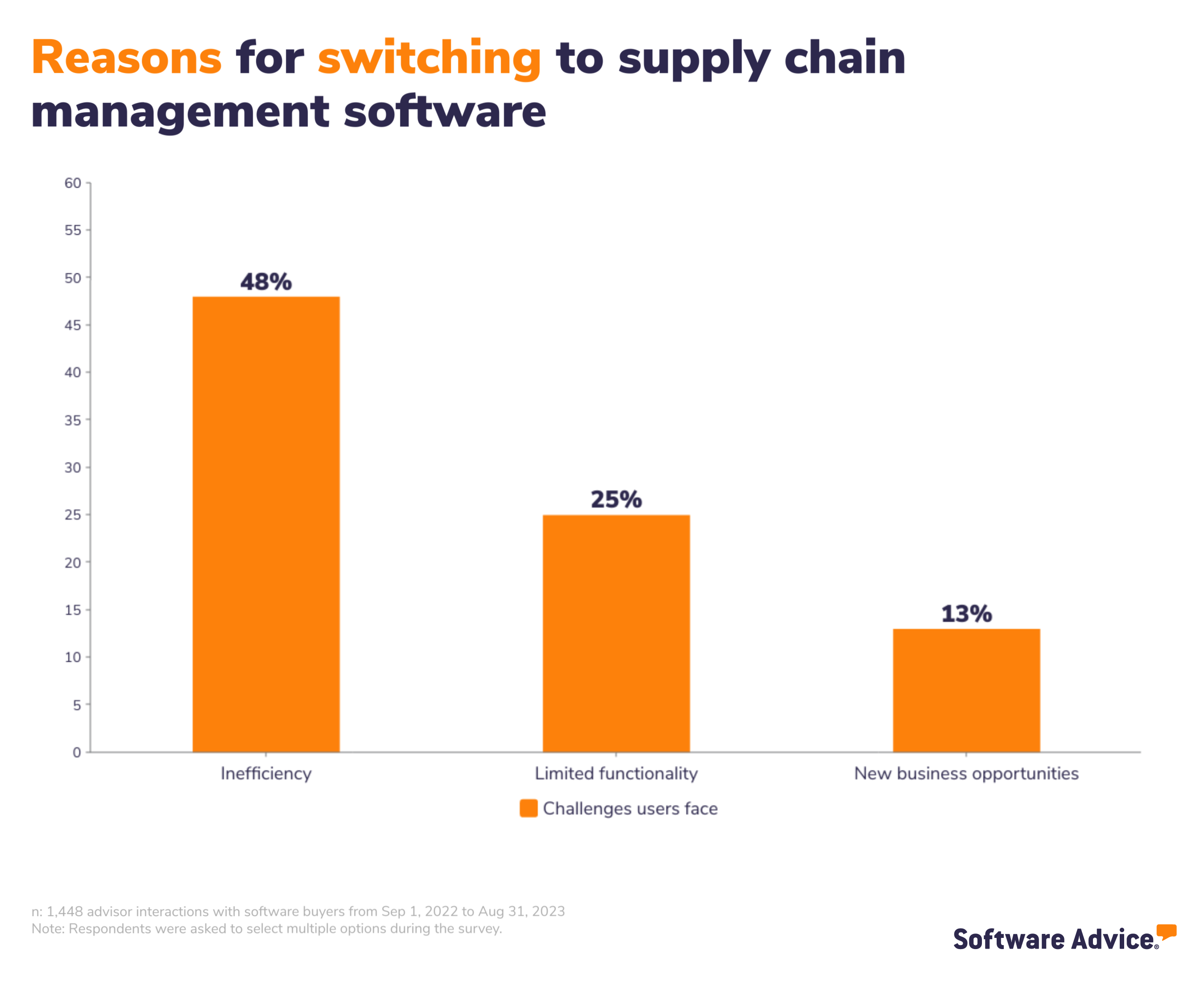
Pro tip
Before making your final purchase decision, look for free trials or setup demos to see if the product helps alleviate the pain points you need to resolve. With a free trial, you’ll be much more informed and equipped to go into a demonstration with a vendor to maximize the information you can get.
The average buyer’s budget ranges from $127 to $187 per user, per month
The budget for purchasing supply chain software varies from industry to industry based on factors such as organization size, the number of users, and the required features and functionalities.
However, the average budget across industries for purchasing supply chain software was approximately $163 per user per month. Additionally, the overall budget came out to be $1956.
The chart below highlights the average buyer budget per user, per month for the top five industries interested in supply chain software.
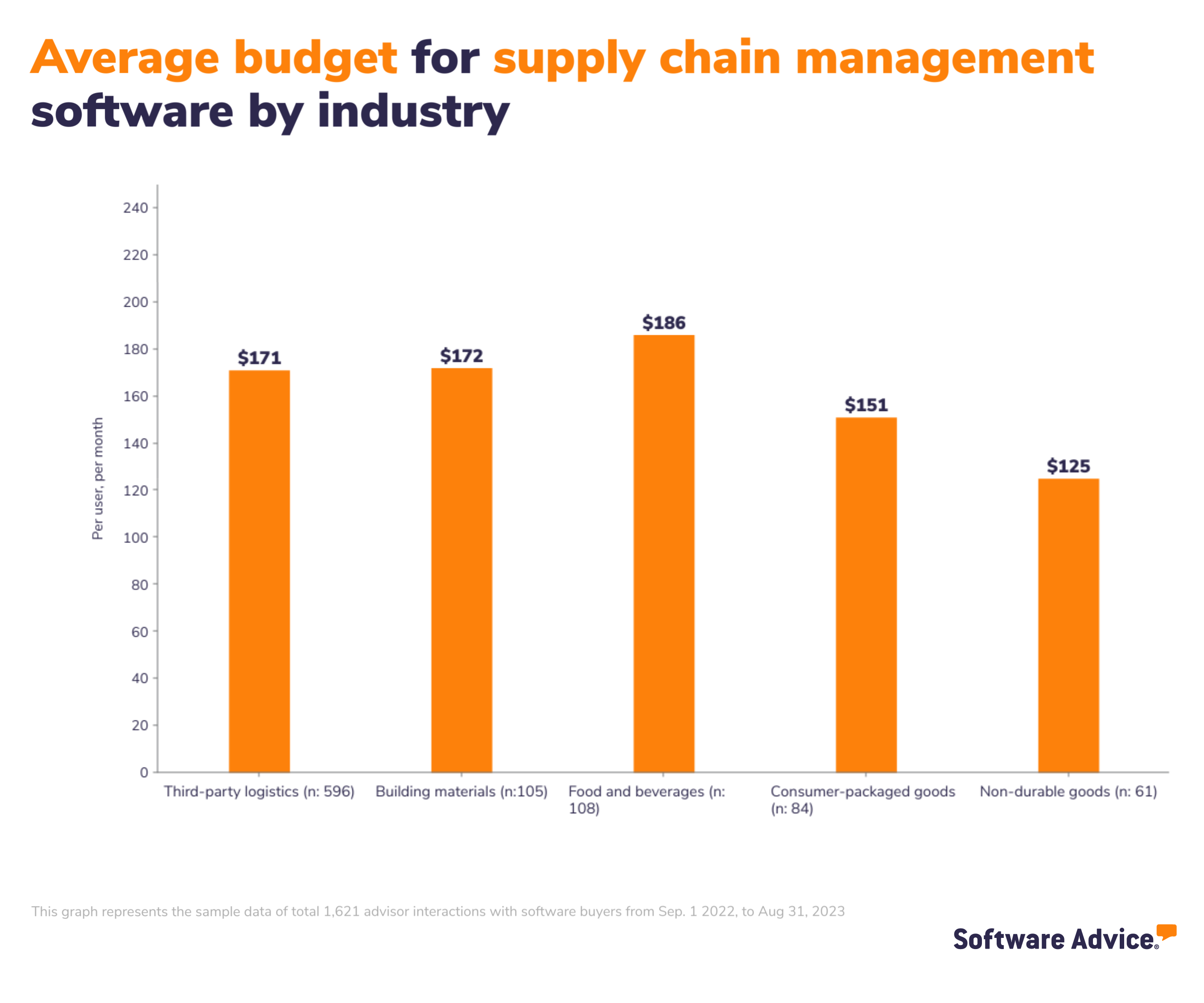
Third-party logistics (3PL) businesses use supply chain software to manage and process client orders, ensuring accurate and timely order fulfillment, tracking, and reporting. Additionally, scalability requirements can influence the software's cost, especially if the business anticipates significant growth soon.
To save on inventory holding costs, businesses that manage building materials must focus on inventory control and keep track of demand variability, especially during the off-season. Such situations require functionalities such as demand forecasting and transportation management.
Businesses dealing with food and beverage and consumer-packaged and perishable goods have to focus on demand forecasting according to market trends, the shelf life of their products, and ensuring timely delivery of goods. In such cases, budgeting for supply chain software depends on the availability of features such as route optimization and distribution, traceability and product recall management, and supplier collaboration.
Pro tip
Prioritize software that provides real-time visibility into your supply chain. This can reduce the need for safety stock and enhance responsiveness to market changes, potentially saving costs. Look for solutions that offer such functionality within your price range.
More resources for your software search
Whether you’re looking to buy new supply chain software or replace your existing tool, here are some additional resources to aid your software search:
Start with our interactive supply chain management software directory to compare hundreds of products, filter your search by specific features, and read comprehensive reviews from SMB leaders.
Check out top-rated supply chain software based on user ratings and popularity in the 2023 Supply Chain Management Frontrunners Report.
Review supply chain management software buyers guide to better understand the market.
Buyer demographics
The buyers we interacted with are largely small businesses. You’ll find the demographics of the buyers below, so you can see the sizes and types of businesses, from annual revenue to industry.
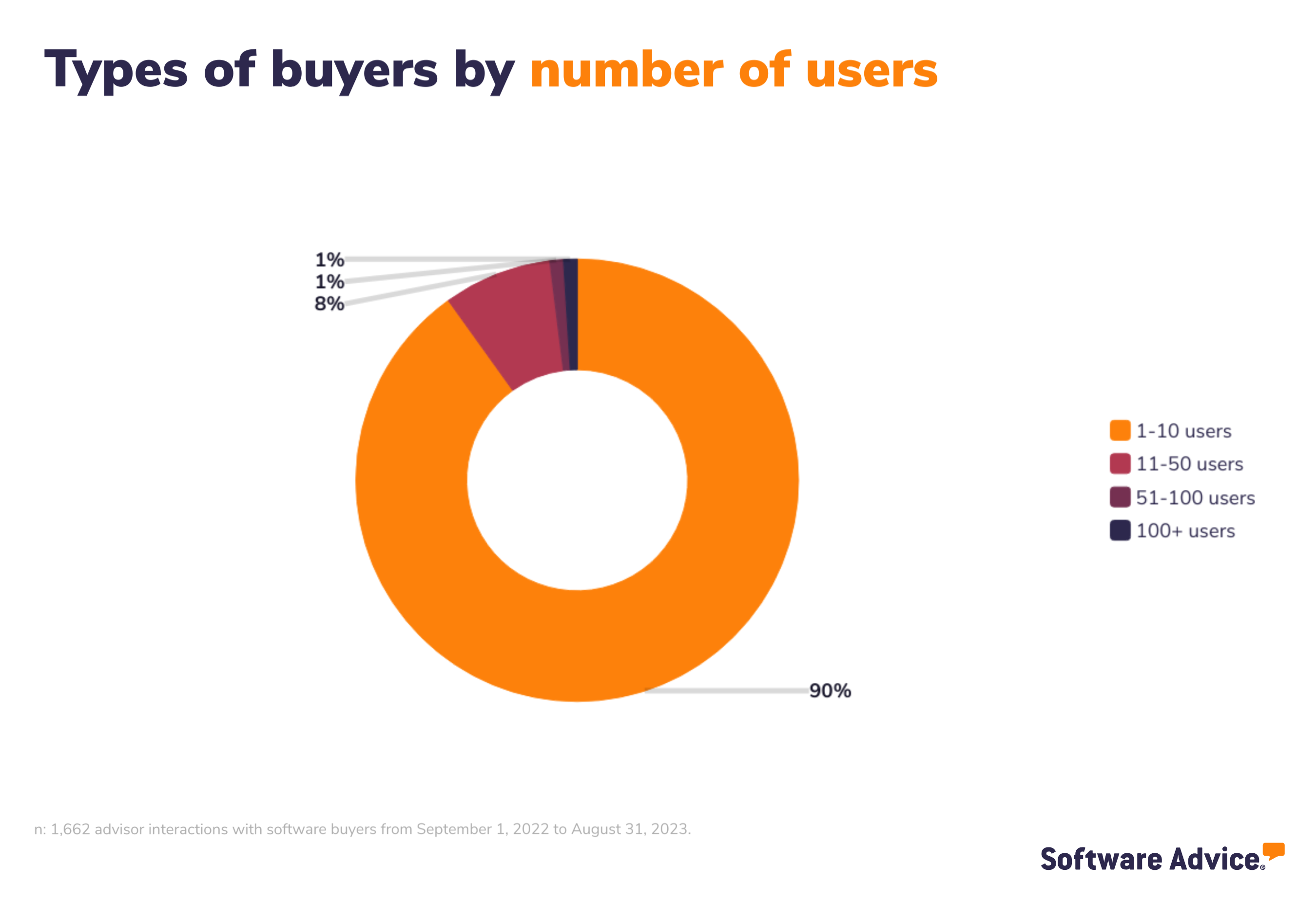


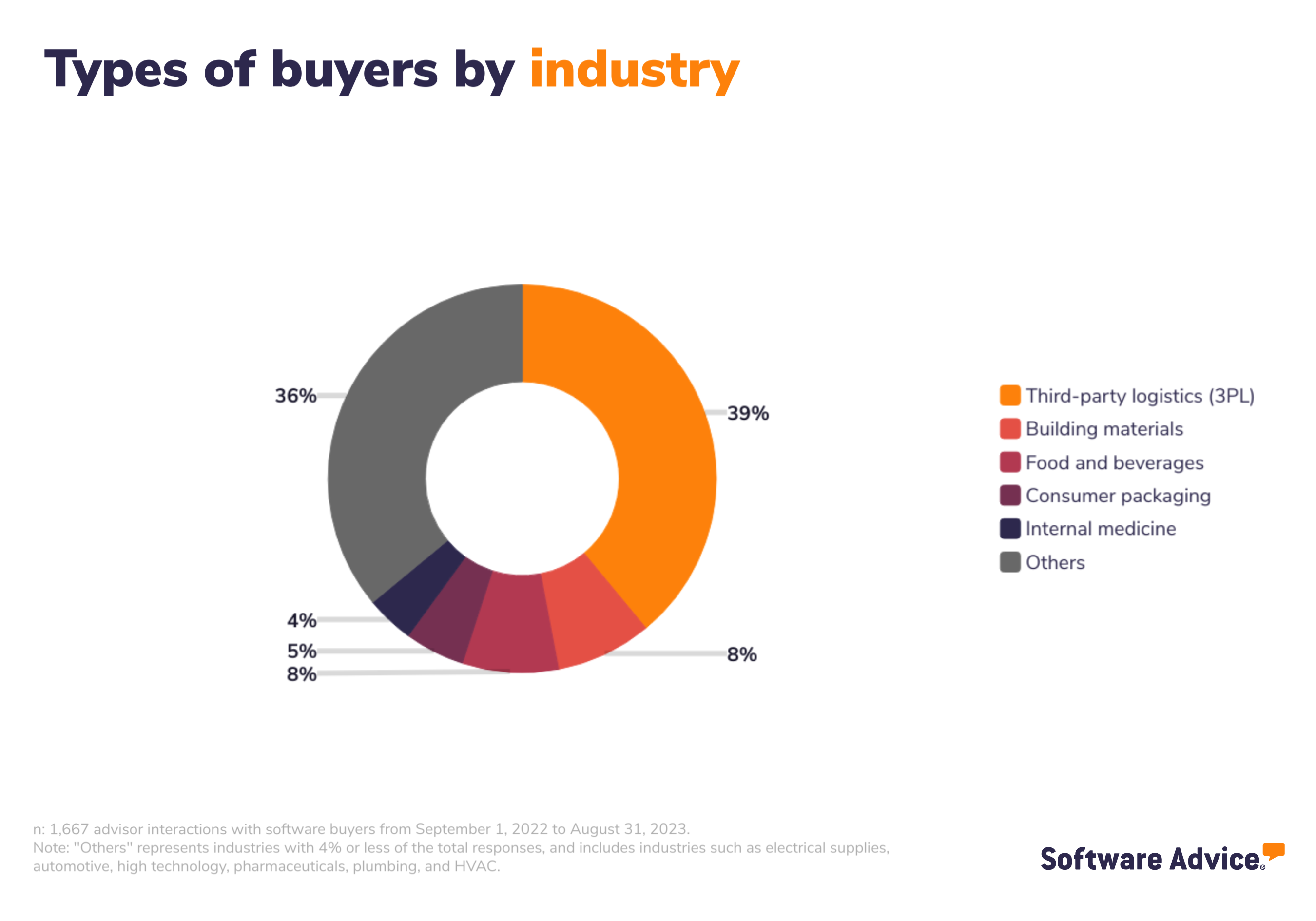
Survey methodology
Software buyers analysis methodology
Findings are based on data from conversations that Software Advice’s advisor team has daily with software buyers seeking guidance on purchase decisions. The data used to create this report is based on interactions with small-to-midsize businesses seeking supply chain management tools. For this report, we analyzed approximately 8,900+ phone interactions from Sep 1, 2022, to Aug 31, 2023.
The findings of this report represent buyers who contacted Software Advice and may not be indicative of the market as a whole. Data points are rounded to the nearest whole number.